Moody’s downgrades Senegal to Caa1 amid rising debt concerns
Introduction & Market Context
Norwegian IT consultancy Bouvet (OB:BOUV) presented its second quarter 2025 results on August 26, showcasing a slight decline in revenue while maintaining a strong market position through new strategic client agreements. The company, which operates primarily in Norway with approximately 2,400 employees across 16 offices, continues to focus on four key sectors: oil and gas, power supply, public administration, and service industry.
As shown in the following overview of Bouvet’s revenue and EBIT development since 2015:

The company has demonstrated consistent growth over the past decade, increasing revenue from 1.2 billion NOK in 2015 to 3.5 billion NOK in 2024, while improving EBIT margins from 3.9% to 13.1% during the same period. This context makes the slight Q2 2025 revenue decline a notable deviation from the long-term trend.
Quarterly Performance Highlights
Bouvet reported operating revenues of NOK 968.7 million for Q2 2025, representing a 3.2% decrease compared to NOK 1,001.2 million in Q2 2024. Despite this decline, the company maintained a healthy EBIT of NOK 123.2 million with a 12.7% margin and generated a profit of NOK 95.7 million for the period.
The following slide highlights the key figures for the quarter:
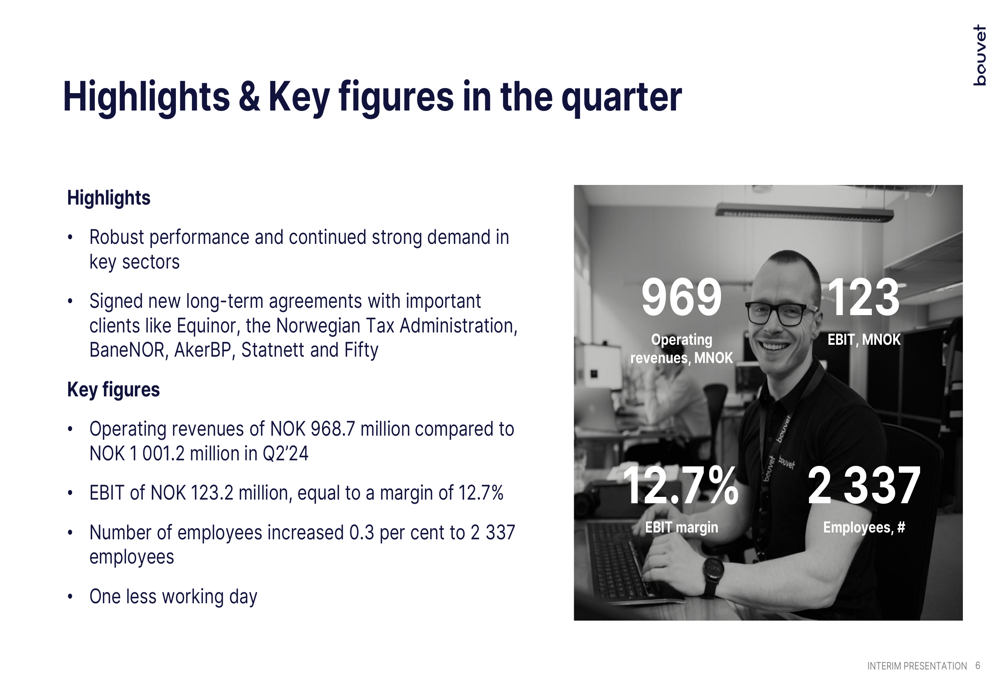
A significant development during the quarter was the signing of new long-term agreements with major clients including Equinor, Norwegian Tax Administration, BaneNOR, AkerBP, Statnett, and Fifty. These agreements reinforce Bouvet’s position in its core sectors and provide a foundation for future revenue stability.
The company’s workforce remained relatively stable with 2,337 employees at the end of Q2 2025, representing a modest increase of 0.3% from the previous quarter and just 6 more employees year-on-year. This employee growth chart illustrates the slowing pace of expansion compared to previous years:
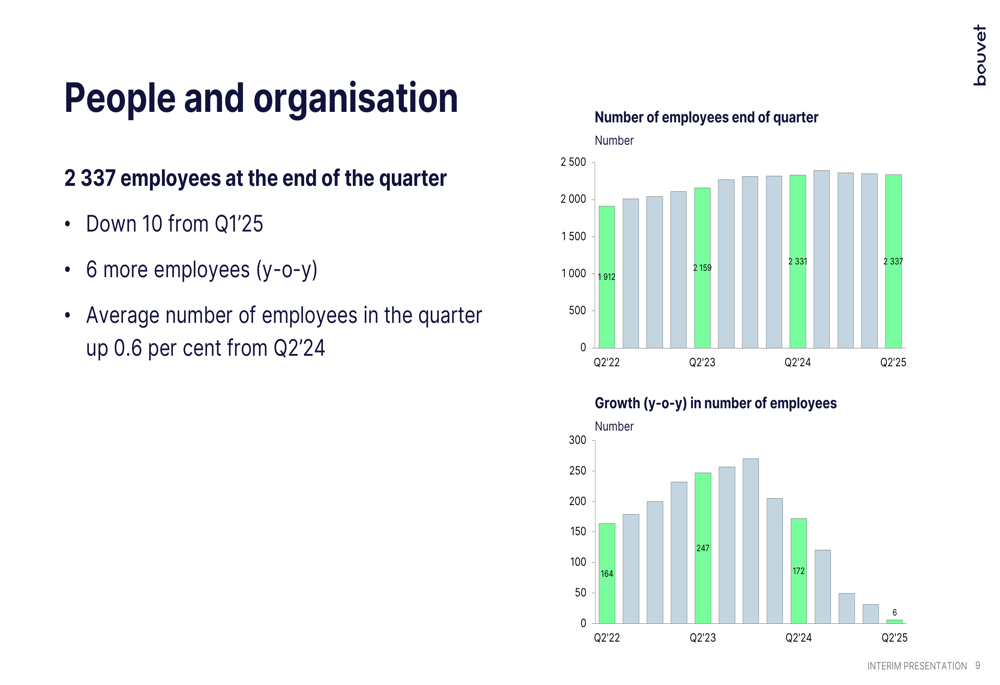
Detailed Financial Analysis
The revenue decline of 3.2% year-over-year can be attributed to several factors. While the company benefited from a 3.4% increase in hourly rates and a 0.6% increase in average employee numbers, these positive effects were offset by a 1.7 percentage point decrease in billing ratio and one less working day in the quarter compared to Q2 2024.
Breaking down the revenue sources, income from Bouvet’s own consultants decreased by 2.7% to NOK 874.5 million, revenue from sub-contracted consultants fell by 9% to NOK 78.3 million, and other revenues decreased by 4.8% to NOK 15.9 million.
The following chart illustrates the revenue and EBIT development over recent quarters:

Bouvet’s business remains concentrated in key sectors, with oil, gas, and renewables representing 39.2% of revenue, followed by power supply (20.3%), public administration and defense (18.9%), and service industry (6.2%). This sector distribution is visualized in the following chart:
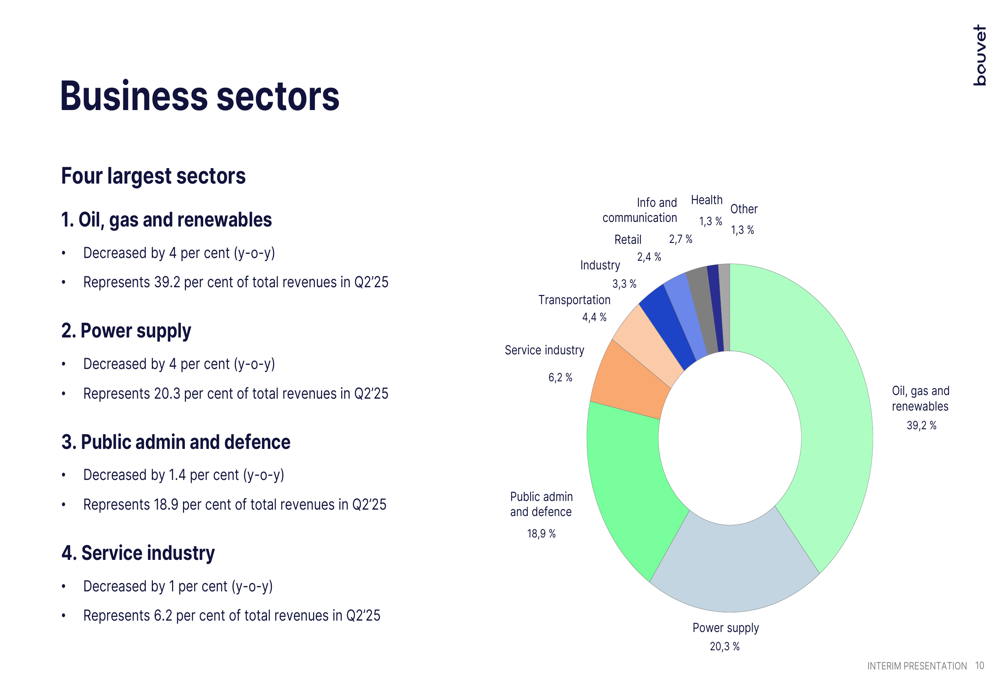
The company’s customer base shows a balanced mix between public sector (47%) and private sector (53%) clients, with the 10 largest customers accounting for 67.2% of total revenues and the top 20 customers representing 75.6%. This concentration highlights both the stability of Bouvet’s revenue streams and its potential vulnerability to changes in major client spending.
The following slide details the customer mix and revenue distribution:
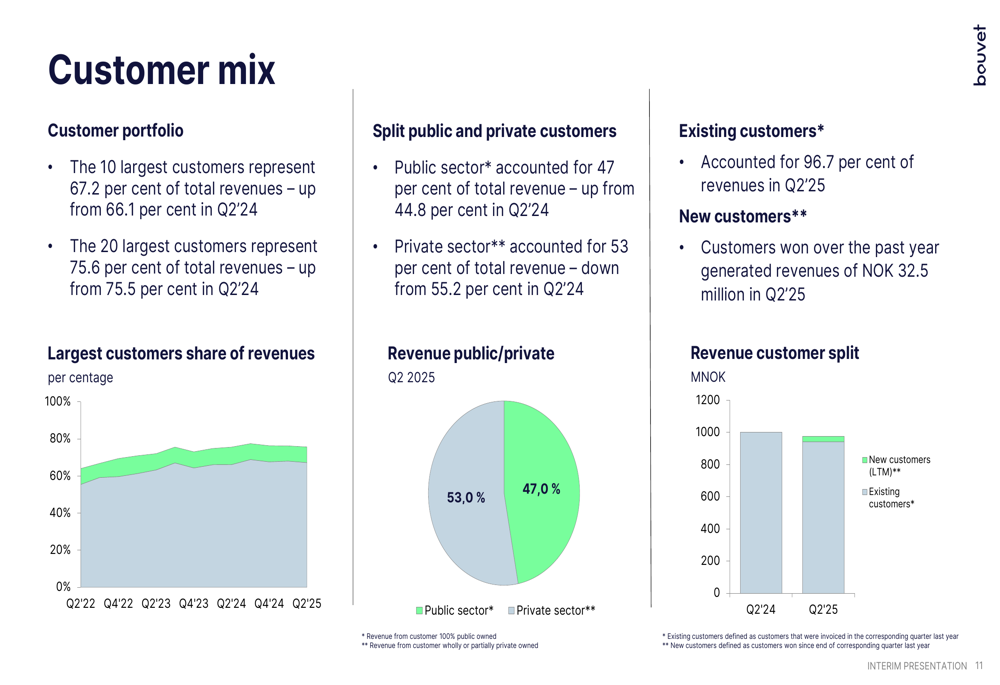
Cash Flow and Balance Sheet
Bouvet’s cash flow from operations decreased significantly to NOK 6.1 million in Q2 2025, compared to NOK 99.9 million in Q2 2024. However, the company maintained a strong financial position with cash and cash equivalents of NOK 383.5 million at the end of the quarter.
The cash flow analysis is presented in the following chart:
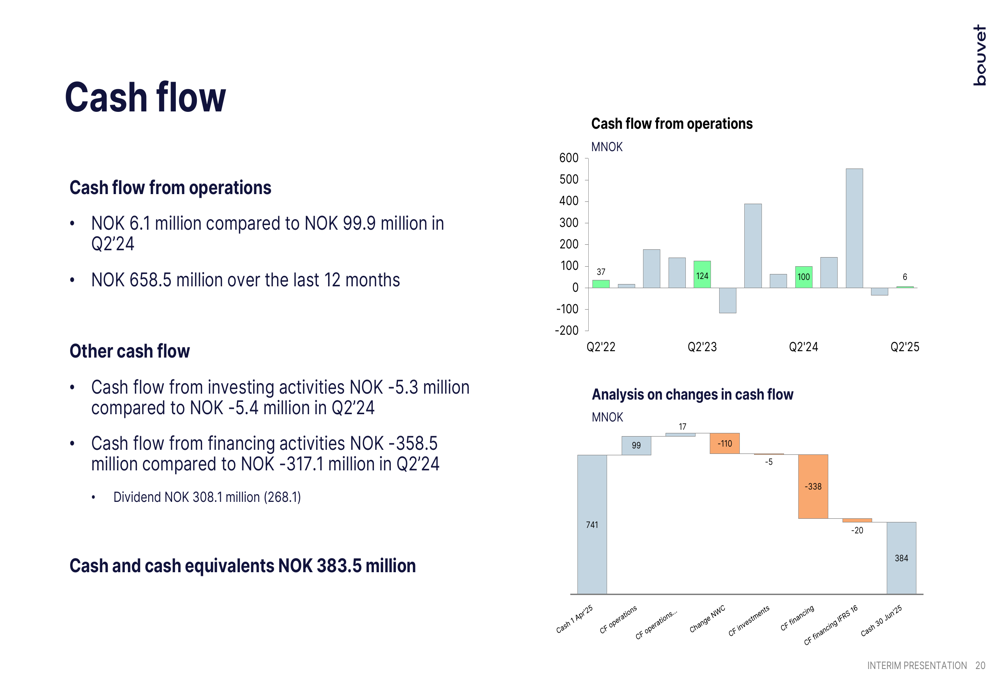
The balance sheet remains robust with no interest-bearing debt, an equity ratio of 18.7%, and a liquidity ratio of 1.08. This financial stability provides Bouvet with flexibility to navigate market fluctuations and potentially pursue strategic investments or acquisitions.

Strategic Initiatives
Bouvet highlighted several strategic client relationships during the presentation, including a new 10-year agreement with Equinor, Europe’s largest energy supplier and a client Bouvet has worked with for over 20 years. The company also secured a new framework agreement with the Norwegian Tax Administration, covering areas such as management consulting, Java system development, and IT architecture.
Additionally, Bouvet is increasing its focus on artificial intelligence, noting growing demand for AI-related assignments. The company’s summer student placement program continues to serve as a talent pipeline, with students working on projects for clients such as Bane NOR and Lyse, developing solutions ranging from railway project planning tools to power outage prediction systems.
Forward-Looking Statements
Looking ahead, Bouvet characterized the market as having "high activity in key sectors" with clients increasingly seeking strategic partnerships. The company noted strong demand for cross-functional teams and growing interest in AI-related assignments, though it also acknowledged "strong competition" in the market.
The company’s outlook suggests a cautiously optimistic view, balancing opportunities in high-demand sectors against competitive pressures. With its established client relationships, balanced sector exposure, and debt-free financial position, Bouvet appears well-positioned to navigate the current market environment despite the slight revenue decline in Q2 2025.
As the Norwegian IT consultancy market continues to evolve, Bouvet’s strategy of maintaining long-term client relationships while expanding into growth areas like AI will be crucial for sustaining its market position and returning to revenue growth in future quarters.
Full presentation:
This article was generated with the support of AI and reviewed by an editor. For more information see our T&C.
